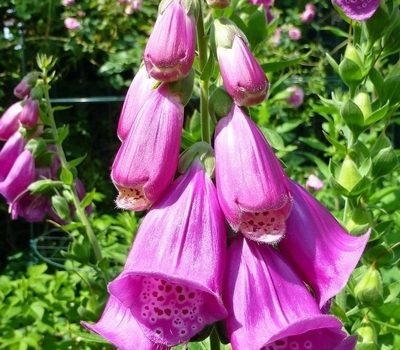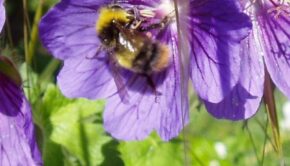Gardens and the environment
Sometimes it seems that you can hardly read or listen to the news without hearing statistics about the environment, from the loss of insect populations, destruction of rain forests to the number of species approaching extinction. But I want you to think about a different statistic and this one is part of the solution not the problem. However, that does not mean that everything in the natural world is rosy. In order to continue the benefits that humanity receives from nature 30% of our land needs to be “good quality habitat” for plants, wildlife and support a healthy eco-system. So this is what is left between all the buildings, roads, airports and intensive agriculture. We need the green spaces where rainfall is absorbed into the ground, rivers overflow into traditional water meadows, trees mature and pollinating insects thrive.
How serious is this? Readers will know that I extol the wellbeing benefits of gardens and green spaces but here we are talking about vital resources. The natural environment provides clean air, water, materials and energy, plus carbon storage, coastal and river flood defences and trees in cities reduce high summer temperatures.
Where do gardens enter the equation? Well when you consider that there are more acres of garden than nature reserves in the UK and that gardens are by definition scattered through urban areas, it is clear that gardens have a great deal to offer. Indeed they will be vital if we are to maintain the balance and benefits that nature gives us. Urban gardens act like stepping stones for animals to move through towns and for migrating birds. Rural gardens are often richer in wildlife than surrounding arable fields. All garden plants, whether native or exotic, exchange carbon dioxide for oxygen. One example is the impact of front gardens being paved for parking: rainwater is not absorbed into the ground and either increases local flooding or is lost into storm drains. The answer is not to ban anything but permeable paving solutions and a small area of planting seem like a reasonable compromise.
However small your garden, keeping it green and growing is doing us all a favour!
Alison Marsden lives in Southborough providing advice to gardeners onsite and online. She teaches Adult Education gardening courses and gives talks to clubs and societies.
There is no long term commitment – just all the advice you need an hour at a time. Find out more at www.gardeningbydesign.co.uk or call 07803 045327
Time to sow biennials
Although August is the time to enjoy peak flower-power in our herbaceous borders, it is also the time to start preparing for next year’s display. This is the time to sow the seeds of ‘biennial’ plants such as Foxgloves and Sweet Williams. These flower in late spring, April and May, and then produce seed in early summer. Unlike annual plants, biennial seeds germinate in late summer of the same year and grow into a young plant before the onset of winter. The biennials that we grow in the UK have to be Hardy so that these young plants are not killed by the frost. Once spring comes again, the plants grow quickly and are able to flower several weeks before spring sown annuals.
Sowing in August mimics the plant’s natural lifecycle and gives time for a strong plant to develop. Biennials are usually grown in a spare corner of the garden or in the Veg plot after summer crops have been harvested. August and September can be dry months with plenty of sunshine so remember to keep the seeds and seedlings watered. They can be planted out into their flowering position in late Autumn when summer bedding is removed.
Happy Gardening, Alison






Comments